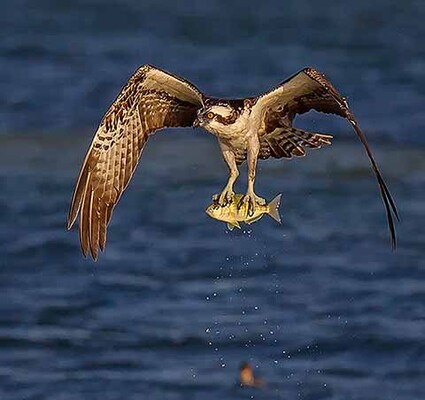Sisters Country birds
Last updated 9/7/2021 at Noon
Gliding up- and downstream on the Metolius or Deschutes rivers, the American Osprey (Pandion haliaetus) searches for available fish, which is 99 percent of its diet. When its prey is spotted, the Osprey dives in the water and uses the barbed pads on the bottom of its talons to grip the slippery fish, and carries it headfirst to make it as aerodynamic as possible. An outer toe is reversible to enable it to grasp the fish with two toes forward and two back, which provides a more stable grip in flight.
During breeding season, males will perform an aerial “sky dance.” Clutching a fish or nest material, they hover as much as 600 feet above the nest for up to 10 minutes, with screaming calls, while slowly descending to the nest. One to four creamy to pinkish-cinnamon eggs are laid in a large stick nest and hatch in 36 to 42 days. Chicks remain in the nest for 50 to 55 days while being fed fish by both parents. Ospreys will nest up to 12 miles from their watery hunting areas. I have observed a number of nests on the shoulders of Mt. Jefferson.
Osprey populations in North America declined dramatically from 1950-1972 due to pesticides such as DDT, which caused eggshell thinning. DDT was banned in 1972 and ospreys have thrived ever since. However, they remain on several states’ endangered or threatened lists.
Ospreys are also known as “fish eagles,” “seahawks,” or “river hawks.”
For more American Osprey photos visit http://

















Reader Comments(0)